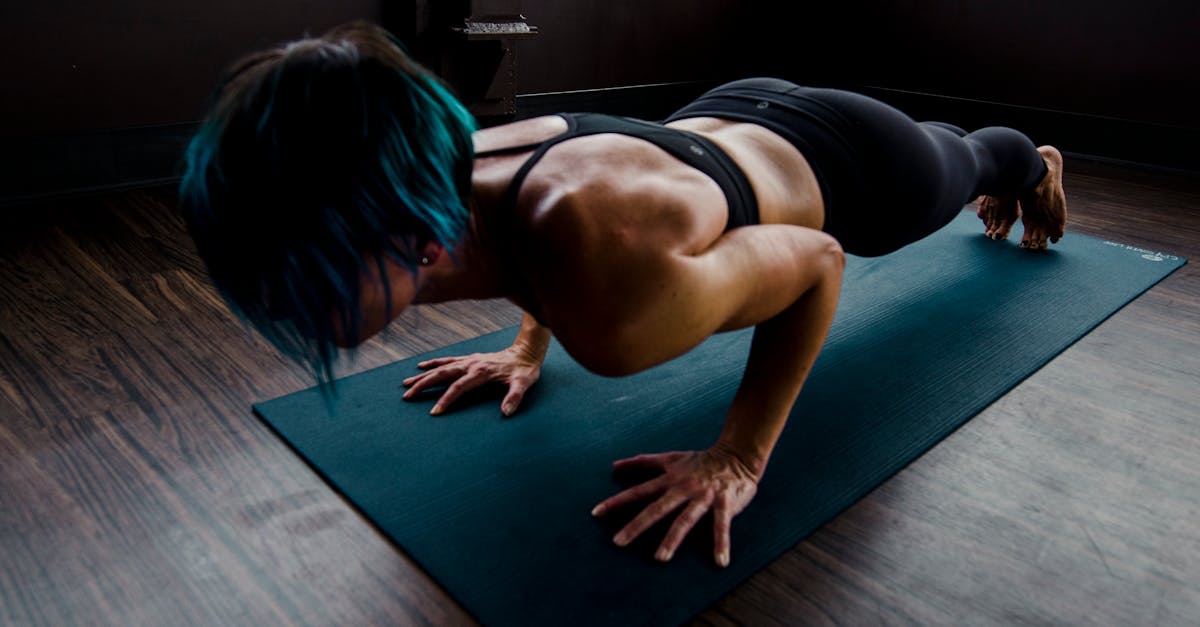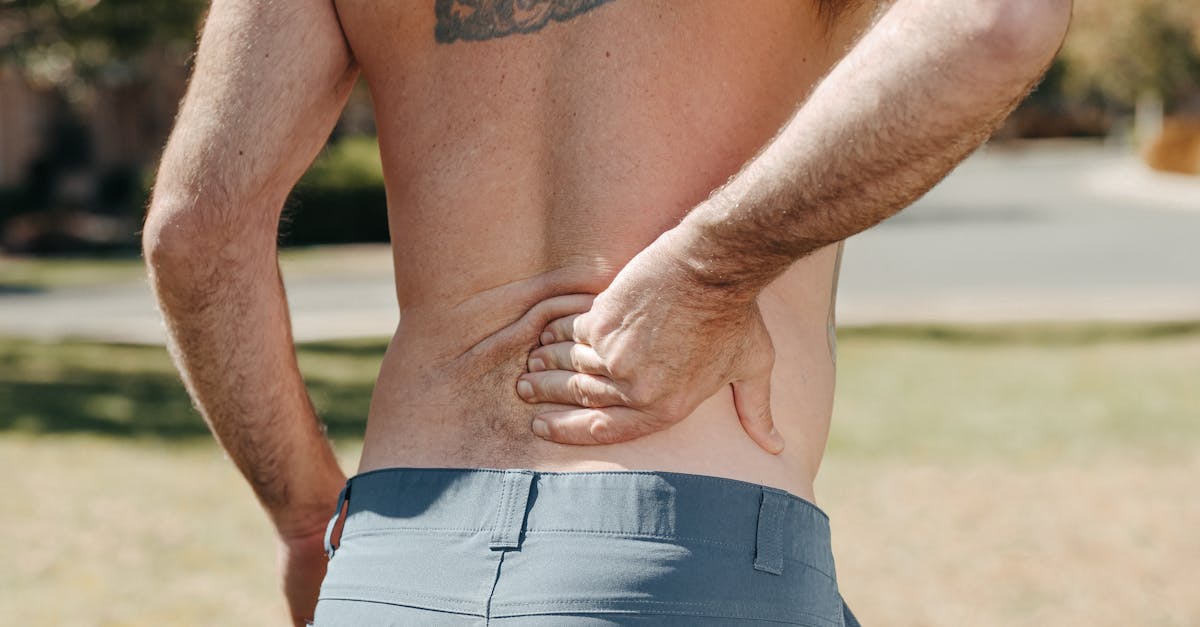Suffering from lower back pain and bad posture? You might have swayback posture.
In Short: Swayback posture causing you discomfort? Improve your posture with targeted exercises and effective solutions. At Pulse Align, our innovative and simple postural recalibration approach can help you achieve a more neutral spine. Reclaim your health and wellness at Pulse Align Clinics. BOOK YOUR APPOINTMENT today!
Are you struggling with lower back pain and poor posture?
Swayback Posture Solutions: Let Pulse Align Guide You to a More Neutral Spine offers effective strategies for posture correction that can significantly help alleviate lower back pain. With research indicating that a large percentage of adults experience issues related to bad posture, it’s essential to explore restorative methods such as core strengthening, stretching exercises, and mindful movement practices. This innovative approach not only focuses on correcting swayback posture but also addresses related issues like kyphosis and rounded shoulders. By implementing posture exercises within a supportive framework, Pulse Align empowers individuals to enhance their alignment naturally and regain their health.

In today’s fast-paced world, maintaining good posture is more important than ever. Posture improvement plays a crucial role in overall wellness and functional balance restoration. At Pulse Align, we believe that with tailored support, the journey to achieving a more balanced posture can be not only effective but also accessible. Our approach focuses on neuromuscular recalibration to help clients reclaim their natural poise and well-being.
The Pulse Align Approach
Swayback posture is characterized by an increased posterior pelvic tilt and thoracic kyphosis, often resulting from muscle imbalances. It can lead to discomfort and general imbalance in daily life. Pulse Align addresses these issues through gentle stimulation that promotes muscle tone symmetry and encourages the body’s natural healing processes. By utilizing innovative techniques, we work to restore natural balance in your body, allowing you to function to your fullest potential.
Holistic Benefits
Our focus at Pulse Align stands strongly within the holistic approach to well-being. Clients often find that engaging with our services not only aids in posture correction but also contributes to a reduction in discomfort experienced from everyday activities. Integrating our techniques like mindful movement, stretching exercises, and the Alexander Technique, we empower clients to enhance their posture naturally and improve overall balance.
Client Experiences
Many clients have shared their experiences, noting that they have improved their posture naturally while feeling more aligned with their body. They appreciate the non-invasive, gentle methods we employ and often report feeling more stable and less tensioned in their daily routines. As one satisfied client put it, “My experience with Pulse Align has not only helped me adjust my posture, but it’s also made me feel more confident and comfortable in my own skin.”
Get Started Today
If you’re ready to explore how you can improve posture and enhance your well-being, consider scheduling a consultation with us at Pulse Align. With locations in cities like Montreal, La Prairie, Terrebonne, Chicoutimi, Charlesbourg, and Saint-Jérôme, we are well-prepared to assist you on your wellness journey. Find a Pulse Align clinic near you and discover the supportive, family-friendly environment that welcomes clients, including children and pregnant women. Remember, while Pulse Align complements healthcare services, it is essential to stay under the care of your healthcare team.
- Postural Awareness: Understand the importance of maintaining alignment throughout daily activities.
- Targeted Exercises: Engage in specific routines that strengthen the core and glutes to correct imbalances.
- Stretching Techniques: Incorporate stretches that alleviate tightness in the hip flexors and hamstrings.
- Ergonomic Adjustments: Optimize your workstation setup to promote a neutral position while sitting or standing.
- Breath Work: Utilize deep, diaphragmatic breathing to support posture and relaxation.
- Professional Guidance: Consult with a posture expert to assess your alignment and tailor a treatment plan.

Introduction to Swayback Posture Solutions
Swayback posture, characterized by a pronounced posterior pelvic tilt and thoracic kyphosis, can lead to various issues with neuromuscular health, affecting both comfort and overall well-being. At Pulse Align, we offer a roadmap to improving posture through a holistic approach that promotes symmetry and natural balance. Our methods include tailored posture exercises, ergonomic adjustments, and mindful movement practices designed to guide you towards a more neutral spine.
Understanding Swayback Posture
Swayback posture often results from muscle imbalances that manifest as tight hamstrings and back muscles, while the abdominal muscles may become weak. This imbalance can create a misalignment in your body’s structure, leading to discomfort and potential injuries. To combat this, it is vital to address the root causes through engage in core strengthening exercises and proper sitting posture adjustments.
Exercises to Alleviate Swayback Posture
Incorporating specific exercises can significantly improve your posture. Focus on trunk exercises that engage your glutes and abdominal muscles. For example, the hip extension exercise promotes proper alignment while targeting essential muscle groups. Additionally, consider practicing yoga for posture and Pilates for posture to further enhance your body awareness and improve your flexibility and strength.
Benefits of Core Strengthening
Core strengthening is essential for a balanced posture. Engaging your core muscles can help stabilize your pelvis and spine, counteracting the effects of swayback posture. Regular practice of exercises that focus on the abdominals, lower back, and gluteal region helps support your body’s natural curvature. Start integrating exercises such as planks and bridge lifts into your routine to build a stronger core that supports proper alignment.
Mindfulness and Movement Techniques
Integrating mindful movement practices, like the Alexander Technique and the Feldenkrais Method, can further enhance your understanding of body dynamics. These techniques emphasize awareness and control over your movements, allowing for improved posture through gentle adjustments in your daily activities.
Ergonomic Considerations
Whether sitting at a desk or standing for prolonged periods, proper ergonomics are crucial in maintaining a neutral spine. Consider investing in a standing desk that can be adjusted to height, ensuring proper ergonomics while working. Adjusting your work environment can alleviate some of the issues associated with swayback posture by promoting a healthier alignment throughout your day.
Take Action Towards Better Posture
Addressing swayback posture is a proactive journey towards enhanced neuromuscular health. Consider exploring our personalized exercise plans and shockwave therapy options at Pulse Align, where we provide tailored solutions suitable for your unique needs. Embrace the opportunity to align your body and cultivate better posture with expert guidance.
Book a consultation with us today to learn more about our holistic approaches and how you can improve your posture effectively, transforming your health and lifestyle for the better.
| Comparison Axis | Pulse Align Approach |
| Postural Awareness | Enhancing bodily awareness to recognize and adjust postural imbalances. |
| Muscle Balance | Fostering equilibrium among muscle groups to prevent tightness and weakness. |
| Movement Optimization | Encouraging smooth and efficient movement patterns for greater wellbeing. |
| Body Recalibration | Utilizing gentle practices to achieve a natural alignment of the body. |
| Self-Assessment | Incorporating self-evaluative techniques to identify postural tendencies. |
| Holistic Methodologies | Integrating a whole-body approach rooted in mind-body connection. |
| Movement Education | Providing resources to educate on functional movement and its benefits. |
| Core Engagement | Promoting exercises that enhance core strength and stability. |
| Flexibility Exercises | Encouraging stretching routines to foster muscle elasticity. |
| Supportive Community | Building a network for shared experiences and encouragement. |

Transformational Wellness Journeys with Pulse Align
Many clients have shared their powerful experiences with Pulse Align’s unique approaches to correcting swayback posture. Those struggling with alignment issues in areas such as La Prairie and Mont-Royal have discovered the profound benefits of reclaiming their health through our gentle, holistic methods. With an emphasis on supporting the body’s natural ability to recalibrate, clients report feeling noticeable improvements in their overall wellness.
In the bustling region of Terrebonne, numerous individuals have turned to Pulse Align for guidance on restoring balance in their bodies. Our approach is centered around understanding the biomechanics of swayback posture and how specific exercises can alleviate discomfort. By engaging in targeted corrective measures, our clients have regained strength and stability, leading to a more neutral spine and reduced pain levels.
From Les Escoumins to Charlesbourg, testimonials reflect a common theme: as clients engage with Pulse Align, they begin to trust in their body’s innate capacity to heal and restore balance. This process not only aids in correcting their posture but also enhances their everyday functional movements, promoting a more vibrant and active lifestyle.
Clients in Deux-Montagnes have noted how Pulse Align’s services have positively influenced their overall well-being, making routine tasks more manageable and enjoyable. The individualized attention and compassionate support we provide empower clients to embrace healthier habits, leading to long-lasting changes in their posture and pain relief.
Other clients from Sainte-Marie and Chicoutimi have experienced a newfound sense of resilience as they navigate better alignment practices. They express gratitude for our holistic methodologies, which emphasize both physical adjustments and fostering mindfulness in everyday activities.
In Châteauguay and Saint-Jérôme, the collaborative approach of Pulse Align has garnered recognition from local healthcare teams, illustrating our commitment to client satisfaction and family support. Together, we work alongside these teams to ensure our clients are on a comprehensive wellness journey that enhances their quality of life.
For residents near Panama City or in the aforementioned regions, seeking out Pulse Align’s expertise can be a transformative step towards achieving optimal posture and overall health. Discover how supportive correction can help you thrive on your wellness journey by visiting Our Clinics today. Experience the difference that our integrative and compassionate strategies can make in your life.
Sway-back posture is characterized by a noticeable increase in the posterior tilt of the pelvis, coupled with a rounded thoracic spine, contrasting with a neutral alignment. This type of posture can lead to a range of discomforts and complications if left unaddressed.
The underlying causes of sway-back posture often include tight hamstrings, weak abdominal muscles, and laxity in certain ligaments around the back and pelvis. Additionally, tightness in the hip flexors can exacerbate this condition, creating further imbalance.
To effectively tackle sway-back posture, it is essential to engage in corrective exercises aimed at strengthening and balancing the affected muscle groups. Key exercises should focus on activating the gluteal muscles and ensuring proper pelvic alignment. For instance, exercises that promote hip extension can be particularly beneficial in restoring stability and alignment.
Maintaining a neutral spine during exercises is crucial. Individuals should ensure their head and neck remain aligned with the spine while keeping a neutral pelvis. For added challenge, variations such as the elbow plank can help further engage and strengthen core muscles, essential for overcoming sway-back posture.
Understanding the biomechanics of your body is necessary for effective correction of sway-back posture. Self-assessments can aid in identifying specific muscle imbalances that need attention, allowing for personalized exercise strategies to rectify these issues effectively.
Our Mission
At Pulse Align, our mission is to deliver evidence-based, client-centered treatments that address the underlying causes of pain and dysfunction. By integrating advanced techniques and technologies, we strive to empower each person to take control of their health, ensuring a high standard of care, lasting relief, and an improved quality of life.
Revolutionizing Chronic Pain Relief with TAGMED’s Spinal Decompression Technology
TAGMED offers an advanced Spinal Decompression Therapy that presents a holistic, non-surgical solution tailored for patients grappling with moderate-to-severe disc conditions such as herniated discs, bulging discs, and spinal stenosis. This innovative technique focuses on gently reducing pressure on affected discs and surrounding nerves, thus enhancing mobility, alleviating pain, and supporting the body’s inherent healing process. If you’ve reached a plateau with conventional treatments, it’s time to explore how TAGMED’s evidence-based decompression approach can help you reclaim an active, pain-free life.
Have you tried conventional treatments and still struggle with persistent back pain due to a severe disc condition?
The core of TAGMED’s therapy lies in its unique mechanism of action. Neurovertebral decompression employs a controlled, progressive traction force applied to the spine. This method notably increases the space between vertebrae, relieving pressure on intervertebral discs and nerve roots. As a direct consequence, fluid circulation improves in the targeted area, effectively addressing inflammation and pain. Thus, TAGMED offers a reliable, non-invasive solution for individuals afflicted with chronic back pain and related issues like sciatica.
One of the hallmark benefits of this non-invasive approach is its capability to substantially alleviate chronic pain and the symptoms associated with herniated discs or spinal stenosis. By minimizing pressure on critical nerve structures and optimizing fluid circulation around the discs, TAGMED’s therapy accelerates recovery while enhancing the quality of life for patients experiencing ongoing discomfort.
When compared to traditional treatment modalities like pain medications, corticosteroid injections, or surgical interventions, TAGMED’s neurovertebral decompression stands out for its distinct advantages. Many conventional treatments are associated with invasive procedures and medication-related risks, which can prolong recovery times. In contrast, neurovertebral decompression presents a non-invasive alternative with a potentially faster path to relief, making it an appealing option for those seeking safer, evidence-based treatments.
Real-world examples highlight the effectiveness of TAGMED’s neurovertebral decompression technology. Numerous patients have reported significant improvements in their conditions, showcasing lasting pain relief and quicker resumption of daily activities. Testimonials reveal a reduced reliance on pharmaceuticals, underscoring the practical advantages of this therapeutic approach and reinforcing the effectiveness of TAGMED’s innovative practices.
In essence, TAGMED’s Spinal Decompression Therapy serves as a beacon of hope for those suffering from chronic pain linked to disc issues. With clear and informative reporting, patients can understand the value of neurovertebral decompression, coupled with compelling real-life examples that emphasize the transformative potential of this treatment.
Achieving Better Posture: The Path to Wellness with Pulse Align
If you’re looking to enhance your well-being through posture correction, look no further than Pulse Align. Our gentle approach to holistic health focuses on supporting your body’s natural healing abilities, allowing you to experience improved posture, reduced discomfort, increased mobility, and an overall sense of enhanced well-being.
Clients have shared positive experiences with Pulse Align, appreciating the supportive environment that fosters their journey to better posture. Every step you take with us is guided by a focus on your personal growth and comfort. Our commitment to natural pain relief allows you to reclaim your vitality without invasive methods, making your wellness journey both effective and enjoyable.
Ready to embark on the path to a more balanced you? Discover the Pulse Align difference today. Schedule your consultation now and take the first step toward experiencing the benefits of a realigned body. Your well-being awaits!

Do you suffer from a chronic condition that responds little or not at all to conservative treatments?
If you are seeking a gentle, non-invasive solution for discomfort and tension, look no further than Pulse Align. This innovative approach utilizes imperceptible pulses to support the body’s natural recalibration process, promoting overall well-being and restoring posture. By focusing on balance and gentle stimulation, Pulse Align can help improve muscle tone symmetry, leading to reduced tension in muscles and joints and enhancing your daily comfort.
At Pulse Align, we believe that the body has an innate ability to recalibrate itself. By fostering a supportive environment, we guide clients toward remarkable improvements in posture and overall comfort without directly addressing specific conditions. Many individuals report feeling lighter and more balanced after experiencing the gentle methods we offer, which reflect our commitment to promoting natural wellness.
Personalization is key at Pulse Align. Our services are tailored to meet the unique needs of each individual, and we take pride in the positive experiences shared by our clients. Many have expressed gratitude for the remarkable changes they’ve noticed in areas such as neck and back tension, as well as overall wellness. Such testimonials highlight our goal to help everyone feel at ease and equipped to engage in life’s daily activities with renewed vitality and balance.
We invite you to explore all that Pulse Align has to offer by visiting our website. There, you can find nearby locations in La Prairie, Mont-Royal, Terrebonne, and many more, ideal for the entire family, including children and pregnant women. We encourage you to book a consultation for yourself or your loved ones and discover how our gentle approach can complement your overall wellness journey. Remember, Pulse Align is designed to work alongside your existing healthcare services, ensuring a holistic embrace of your well-being. To learn more about our services and book an appointment, visit our website: Pulse Align.
Frequently Asked Questions
Posture Imbalance, body misalignment
- Are massages helpful for improving body alignment?Massage can relax tense muscles, improve circulation, and facilitate postural adjustments, especially combined with targeted exercises.
- How does breathing influence posture?Proper diaphragmatic breathing supports the trunk and improves alignment, while shallow breathing can increase tension.
- What are common signs of body misalignment?Uneven shoulders, a tilted pelvis, abnormal spinal curvature, or a head leaning forward may indicate misalignment.
- Do morning stretches help?Yes, gentle morning stretches relax muscles, prepare the body for the day, and help maintain better posture.
- How do I maintain achieved progress?Continue exercising, stay attentive to daily posture, and have regular check-ups with a professional.
- Can poor posture cause jaw pain?Yes, improper head and neck alignment may create tension in the jaw, leading to pain or TMJ issues.
- Do relaxation techniques help correct posture?Yes, techniques like meditation or yoga relax muscles, reduce stress, and encourage better body awareness.
- Can postural imbalance cause sleep disturbances?In some cases, muscle tension and associated pain can disrupt sleep.
- How long does it take to improve misalignment?The timeframe varies depending on severity. With consistent effort, it may take a few weeks to a few months to see significant improvements.
- How does a physical therapist evaluate body misalignment?They perform a visual posture assessment, mobility and strength tests, and gait observation to identify deviations.
Victor Guillot knows that life’s pains can often be traced back to the way we sit, stand, and move. As a Posture Awareness Advocate at Pulse Align, he’s committed to showing readers how small adjustments in alignment can bring big relief. With a blend of empathy and evidence-based research, Victor translates the science of posture into practical steps that help ease discomfort, protect against injury, and restore natural balance. He believes that everyone deserves to feel strong, stable, and pain-free—and through his writing, he offers the guidance and encouragement to help readers reach that goal.
Medical Disclaimer
The information and advice provided on this site do not replace the advice, diagnosis, or treatment of a healthcare professional. Please note that the author of this article is neither a doctor nor a specialist in a medical specialty as defined by the Collège des médecins du Québec. Manual medicine, functional medicine, and sports medicine as described on this site exclude any medical treatment or diagnosis made by a doctor or medical specialist. Always consult your doctor for any medical questions. For more details, please read our complete Legal Notice.
References
- Jarraya, Mohamed, et al. “Sports Injuries at the Rio de Janeiro 2016 Summer Paralympic Games: Use of Diagnostic Imaging Services.” European Radiology, vol. 31, no. 9, 2021, pp. 6768–79, https://doi.org/10.1007/s00330-021-07802-3.
- Lenjani, Basri, et al. “Emergency Medical Care and Management of Sports Injuries on the Football Court.” Albanian Journal of Trauma and Emergency Surgery, vol. 5, no. 1, 2021, pp. 773–77, http://journal.astes.org.al/AJTES/index.php/AJTES/article/view/172.
- Liu, Tao. “Impact of Posture and Recovery Methods on Sports Injuries.” Revista Brasileira de Medicina Do Esporte, vol. 28, no. 6, 2022, pp. 719–22, https://www.scielo.br/j/rbme/a/BRzZwhZBjXSLYCHNH3PpDSL/?lang=en.
- Nielsen, Jesper Möller, and Mats Hammar. “Sports Injuries and Oral Contraceptive Use: Is There a Relationship?” Sports Medicine, vol. 12, no. 3, 1991, pp. 152–60, https://doi.org/10.2165/00007256-199112030-00002.
- Seah, Pei Zhen, et al. “Risk Stratification of Paediatric Sports Injuries Seen at a Tertiary Hospital.” Ann Acad Med Singap, vol. 49, 2020, pp. 955–62, https://www.annals.edu.sg/pdf/49VolNo12Dec2020/V49N12p955.pdf.
- Jayashankar, Venati, and M. Srinivas Naik. “A Research Study on Deaths Due to Injuries to Abdomen Brought to Ananthapuram Govt. Medical College Mortuary, Andhra Pradesh from January 2010 to December 2016.” Medico-Legal Update, vol. 18, no. 2, 2018, pp. 181–84, https://www.indianjournals.com/ijor.aspx?target=ijor:mlu&volume=18&issue=2&article=040.
- Kaynaroğlu, Volkan, and Yusuf Alper Kiliç. “Archery-Related Sports Injuries.” Sports Injuries, edited by Mahmut Nedim Doral, Springer Berlin Heidelberg, 2012, pp. 1081–86, https://doi.org/10.1007/978-3-642-15630-4_143.
- Guermazi, Ali, et al. “Sports Injuries at the Rio de Janeiro 2016 Summer Olympics: Use of Diagnostic Imaging Services.” Radiology, vol. 287, no. 3, 2018, pp. 922–32, https://doi.org/10.1148/radiol.2018171510.
- Bahr, Roald, and Sverre Mæhlum. Clinical Guide to Sports Injuries. Human Kinetics, 2004, https://books.google.com/books?hl=fr&lr=&id=mmRnr0x0p4QC&oi=fnd&pg=PA86&dq=%22sports+injuries%22+%2B+abdomen&ots=mF6T-o_I4q&sig=CtFsHciVC0aKP7AIcw-wVJdjT6k.
- Engebretsen, Lars, et al. “Sports Injuries and Illnesses during the Winter Olympic Games 2010.” British Journal of Sports Medicine, vol. 44, no. 11, 2010, pp. 772–80, https://bjsm.bmj.com/content/44/11/772.short.




